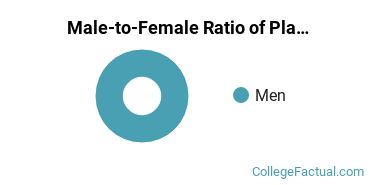 by our College Data Analytics Team
by our College Data Analytics TeamPlant Sciences is a major offered under the agriculture and agriculture operations program of study at Colorado State University - Fort Collins. We’ve gathered data and other essential information about the doctor’s degree program in plant sciences, such as if the program is offered online, ethnicity of students, how many students graduated in recent times, and more.
You can jump to any section of this page using the links below:
During the 2019-2020 academic year, part-time graduate students at Colorado State paid an average of $1,433 per credit hour if they came to the school from out-of-state. In-state students paid a discounted rate of $584 per credit hour. Information about average full-time graduate student tuition and fees is shown in the table below.
| In State | Out of State | |
|---|---|---|
| Tuition | $10,520 | $25,791 |
| Fees | $2,264 | $2,264 |
Online degrees for the Colorado State plant sciences doctor’s degree program are not available at this time. To see if the school offers distance learning options in other areas, visit the Colorado State Online Learning page.
None of the students who received their PhD in plant sciences in 2019-2020 were women.

None of the plant sciences doctor’s degree recipients at Colorado State in 2019-2020 were awarded to racial-ethnic minorities*.

| Race/Ethnicity | Number of Students |
|---|---|
| Asian | 0 |
| Black or African American | 0 |
| Hispanic or Latino | 0 |
| Native American or Alaska Native | 0 |
| Native Hawaiian or Pacific Islander | 0 |
| White | 1 |
| International Students | 2 |
| Other Races/Ethnicities | 0 |
Plant Sciences students may decide to major in one of the following focus areas.
| Focus Area | Annual Graduates |
|---|---|
| Horticultural Science | 1 |
| Plant Protection & Integrated Pest Management | 2 |
You may also be interested in one of these majors related to plant sciences.
| Related Major | Annual Graduates |
|---|---|
| Agricultural Economics & Business | 1 |
| Animal Science | 5 |
*The racial-ethnic minorities count is calculated by taking the total number of students and subtracting white students, international students, and students whose race/ethnicity was unknown. This number is then divided by the total number of students at the school to obtain the racial-ethnic minorities percentage.
More about our data sources and methodologies.